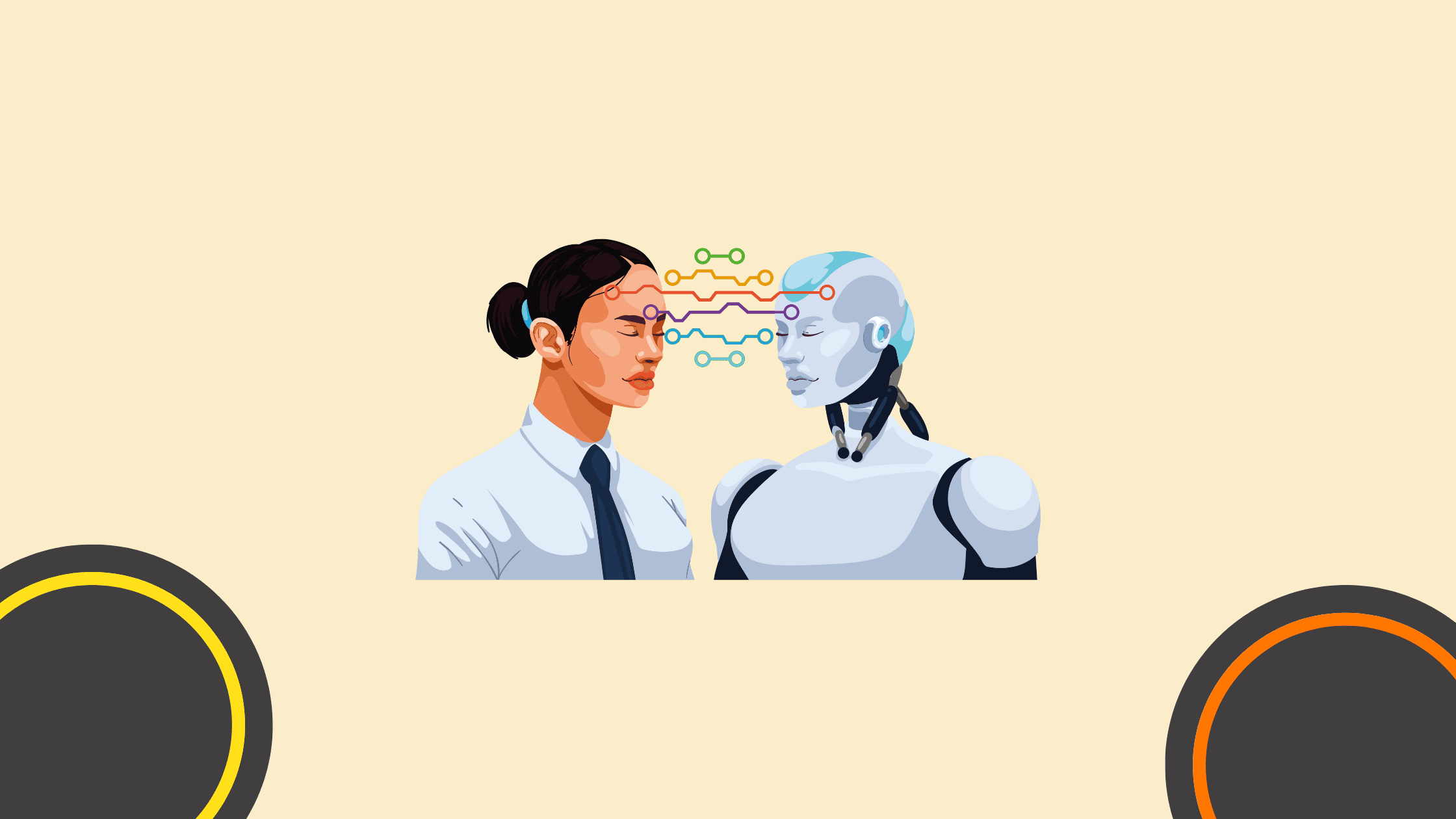AI and Robotics: Advancements in Autonomous Systems and Humanoid Robots
Artificial Intelligence (AI) and Robotics form the bedrock of modern technological advancements, revolutionizing industries and daily life. AI, the artificial intelligence model of humans, empowers systems to learn, reason, and adapt, enhancing efficiency and decision-making. It encompasses various domains like machine learning, natural language processing, and computer vision.
Robotics, on the other hand, involves designing and constructing intelligent machines capable of performing tasks autonomously or semi-autonomously. These machines, ranging from industrial arms to humanoid robots, blend AI algorithms with mechanical structures to interact with the physical world.
Chapters
- Evolution of Autonomous Systems
- Cutting-Edge Technologies in Robotics
- Applications of AI-Driven Autonomous Systems
- Humanoid Robots: Bridging the Gap
- Challenges and Ethical Considerations in the Integration of AI and Human Interaction
- Future Prospects and Impact on Society
- The Integration of AI and Human Interaction
- Conclusion
- FAQ
Evolution of Autonomous Systems

The Evolution of Autonomous Systems marks a revolutionary journey in AI and robotics, showcasing the remarkable advancements in technology. From the early stages of basic automation to the sophisticated and intelligent systems of today, this evolution encapsulates the fusion of AI, robotics, and human ingenuity.
Initially rooted in industrial automation, autonomous systems have transcended traditional boundaries. They now permeate various sectors, from healthcare and transportation to household utilities. The article explores the evolutionary trajectory, unveiling key achievements and breakthroughs that have shaped the landscape of autonomous technology.
With a spotlight on humanoid robots, it navigates through their development, from rudimentary functionalities to their current state of near-human capabilities. Delving into the convergence of AI algorithms, sensor technologies, and machine learning, it illustrates how these elements synergize to empower robots to understand and interact with the world around them.
Cutting-Edge Technologies in Robotics
Cutting-edge technologies in Robotics represent an exhilarating frontier, reshaping industries and daily life. Advancements like machine learning algorithms enable robots to adapt and learn, enhancing their problem-solving abilities. Collaborative robots, or cobots, designed to work alongside humans, revolutionize manufacturing by boosting efficiency and safety. Sensory technologies such as computer vision and LiDAR empower robots with spatial awareness and object recognition, crucial for autonomous navigation.
Additionally, soft robotics, mimicking natural organisms, offer versatility in delicate tasks and interactions. The fusion of AI and robotics, exemplified by advancements in the interdisciplinary field of an artificial intelligence course, fuels breakthroughs in healthcare, with robotic surgery systems ensuring precision and minimally invasive procedures. As innovation accelerates, these cutting-edge technologies in robotics promise not just automation but a transformative evolution in various domains, fostering a future of unprecedented possibilities.
Applications of AI-Driven Autonomous Systems

AI-driven autonomous systems find applications across various industries, revolutionizing processes and enhancing efficiency.
- In healthcare, these systems assist in diagnostics, personalized medicine, and surgical procedures, improving patient care and outcomes.
- Transportation benefits from autonomous vehicles, optimizing routes, reducing accidents, and transforming logistics.
- Manufacturing employs AI for predictive maintenance, quality control, and automation of repetitive tasks, leading to increased productivity and cost savings.
- Agriculture leverages autonomous drones and robots for precision farming, monitoring crops, and optimizing resource usage for higher yields.
- In finance, AI-driven systems analyze vast datasets for fraud detection, risk assessment, and algorithmic trading, enhancing decision-making and security.
- Smart homes utilize AI for energy management, security, and personalized user experiences.
Moreover, in space exploration, autonomous systems aid in satellite navigation, planetary exploration, and data analysis.
Overall, AI-driven autonomous systems continue to redefine industries by streamlining processes, improving accuracy, and fostering innovation across various domains.
Humanoid Robots: Bridging the Gap
Humanoid robots are the technological bridge between imagination and reality, embodying our quest to replicate human capabilities in machines. Combining AI, mechanics, and human-like features, they navigate environments and interact seamlessly with people. These robots transcend mere functionality, eliciting empathy and engaging in diverse roles, from assisting in healthcare to aiding in household tasks.
Their advancements in dexterity, facial recognition, and speech emulation foster a sense of familiarity and comfort. As they evolve, ethical considerations arise, prompting discussions about their integration into society and the boundaries of human-robot interaction.
Challenges and Ethical Considerations in the Integration of AI and Human Interaction
The integration of Artificial Intelligence into human interaction presents a myriad of challenges and ethical considerations. One primary challenge revolves around the potential loss of human jobs due to automation.
As AI systems become more sophisticated, there’s a growing concern about job displacement across various industries. Finding ways to mitigate this impact and retrain the workforce for jobs that require human-centric skills becomes crucial.
Ethical considerations encompass a broad spectrum. Privacy concerns arise with the collection and utilization of huge amounts of personal data by AI systems. Maintaining transparency in how data is used and ensuring the protection of individuals’ privacy is paramount. Bias in AI algorithms is another ethical challenge. These systems can inherit biases from the data they are trained on, leading to unfair or discriminatory outcomes. Addressing these biases and ensuring fairness and inclusivity in AI applications are ethical imperatives.
Future Prospects and Impact on Society

Despite these challenges, the integration of AI and human interaction holds immense potential. AI-driven technologies offer solutions to complex problems across healthcare, education, finance, and various other sectors. Healthcare stands to benefit significantly, with AI aiding in diagnostics, personalized medicine, and improving patient outcomes. Education could become more personalized and accessible through AI-driven adaptive learning platforms. Furthermore, AI could revolutionize transportation, making it safer and more efficient with autonomous vehicles.
The societal impact of AI integration is profound. It has the potential to enhance productivity, streamline different processes, and improve the overall quality of life. However, there’s a need for responsible deployment to ensure equitable access and distribution of benefits across different segments of society.
The Integration of AI and Human Interaction
The successful integration of AI into human interaction necessitates a harmonious collaboration. AI systems should complement human abilities rather than replace them entirely. Empathy, emotional intelligence, and creative problem-solving are distinctly human traits that AI lacks. Hence, fostering collaboration where AI augments human capabilities rather than substitutes them becomes crucial.
Effective human-AI interaction requires user-friendly interfaces and transparent communication between humans and machines. Designing AI systems that explain their decisions and actions in understandable terms, a key focus of an AI and machine learning course, enhances trust and fosters better interaction.
Conclusion
The rapid evolution of AI and robotics marks an extraordinary chapter in our technological journey. As we witness the convergence of innovative capabilities in autonomous systems and humanoid robots, the potential for transformation across industries and daily life becomes increasingly evident. These advancements promise unparalleled efficiency, safety, and convenience, revolutionizing everything from transportation and healthcare to personal assistance and beyond. However, amidst this progress, it’s crucial to navigate ethical considerations and ensure responsible development, placing human values and well-being at the forefront. As we continue to embrace these remarkable advancements, a harmonious collaboration between human intelligence and artificial ingenuity holds the key to a future where technology serves as a catalyst for progress and enhances the human experience.
FAQ
What role does AI play in robotics?
AI plays a crucial role in robotics by enabling machines to perceive, learn, and make decisions autonomously, enhancing their capabilities in tasks such as navigation, object recognition, and manipulation.
How does AI improve the efficiency and accuracy of robotic systems?
AI improves the efficiency and accuracy of robotic systems by enabling real-time data analysis, adaptive control algorithms, and predictive modeling, allowing robots to optimize their actions based on changing conditions and objectives.
What are some examples of AI-powered applications in robotics?
Examples of AI-powered applications in robotics include autonomous vehicles, industrial robots, service robots, medical robots, and drones, all of which leverage AI algorithms for perception, planning, and control.
How does machine learning contribute to the advancement of robotics?
Machine learning contributes to the advancement of robotics by enabling robots to learn from experience, improve performance over time, and adapt to new tasks and environments without explicit programming, leading to more capable and versatile robotic systems.
What are the benefits of integrating AI into robotic prosthetics and assistive devices?
Integrating AI into robotic prosthetics and assistive devices enhances their functionality by providing natural and intuitive control interfaces, personalized movement patterns, and adaptive responses to user needs and preferences.
How does AI-driven computer vision enhance robotic perception and object recognition?
AI-driven computer vision enhances robotic perception by enabling robots to interpret visual data, recognize objects and obstacles, and navigate complex environments autonomously, improving their situational awareness and decision-making capabilities.
What role does reinforcement learning play in robotic decision-making and behavior adaptation?
Reinforcement learning enables robots to learn optimal behaviors and decision-making strategies through trial and error, receiving feedback from their actions and adjusting their behavior to maximize rewards or achieve predefined objectives.
How does AI enable collaborative interaction between robots and humans in shared workspaces?
AI enables collaborative interaction between robots and humans by facilitating natural language communication, gesture recognition, and shared task planning, allowing for seamless cooperation and coordination between human workers and robotic systems.
What ethical considerations arise from the integration of AI into robotics?
Ethical considerations arising from the integration of AI into robotics include concerns about job displacement, algorithmic bias, privacy implications, and the potential for autonomous systems to cause harm or act against human values and interests.
How does AI-driven predictive maintenance enhance the reliability and longevity of robotic systems?
AI-driven predictive maintenance analyzes sensor data and operational patterns to anticipate equipment failures, schedule proactive maintenance tasks, and optimize resource allocation, ensuring the reliability and longevity of robotic systems while minimizing downtime and repair costs.
How does AI facilitate the development of autonomous robots?
AI facilitates the development of autonomous robots by providing algorithms for perception, decision-making, and control, allowing robots to operate independently and adapt to dynamic environments without constant human intervention.
What are some challenges in integrating AI with robotics, and how are they addressed?
Challenges in integrating AI with robotics include computational complexity, sensor limitations, and uncertainty in real-world environments, which are addressed through advances in algorithm efficiency, sensor technology, and simulation-based training methods.
How does AI-driven predictive modeling improve robotic task planning and resource allocation?
AI-driven predictive modeling improves robotic task planning and resource allocation by analyzing historical data, predicting future outcomes, and optimizing schedules, routes, and resource utilization to maximize efficiency and productivity.
What role does AI play in the development of socially intelligent robots capable of interacting with humans?
AI enables the development of socially intelligent robots by providing algorithms for natural language understanding, emotion recognition, and social behavior modeling, allowing robots to engage in meaningful interactions and collaborations with humans.
How does AI-driven optimization enhance robotic manufacturing processes?
AI-driven optimization enhances robotic manufacturing processes by optimizing production schedules, workflow layouts, and supply chain logistics, improving productivity, quality, and cost-effectiveness in industrial settings.
What are some examples of AI-powered robotic systems used in healthcare and medical applications?
Examples of AI-powered robotic systems in healthcare include surgical robots for minimally invasive procedures, rehabilitation robots for physical therapy, and telepresence robots for remote patient monitoring and assistance.
How does AI enable robots to adapt to changes in their environment and task requirements?
AI enables robots to adapt to changes by incorporating learning algorithms that enable them to acquire new skills, refine existing behaviors, and adjust their strategies based on feedback and environmental cues.
What role does AI-driven data analytics play in robotic decision-making and performance optimization?
AI-driven data analytics enables robots to analyze sensor data, environmental variables, and historical trends to make informed decisions, optimize performance, and identify opportunities for improvement in various tasks and applications.
How does AI contribute to the development of swarm robotics systems capable of collective behavior and coordination?
AI contributes to swarm robotics by providing algorithms for decentralized decision-making, swarm intelligence, and emergent behaviors, enabling groups of robots to collaborate, self-organize, and accomplish complex tasks collectively.
What ethical considerations should be addressed in the deployment of AI-powered robotic systems in society?
Ethical considerations in the deployment of AI-powered robotic systems include concerns about safety, accountability, privacy, and the impact on employment, requiring careful regulation, transparency, and ethical guidelines to ensure responsible development and use.
Author Bio
 I’m Erika Balla, a Hungarian from Romania with a passion for both graphic design and content writing. Following the completion of my studies in graphic design, I discovered a second passion in content writing, particularly in crafting well-researched, technical articles. I derive joy from dedicating hours to reading magazines and collecting materials that inspire the creation of my articles. What sets me apart is my love for precision and aesthetics. I am committed to delivering high-quality content that not only educates but also engages readers with its visual appeal. I bring a unique perspective to my writing, actively immersing myself in this field to produce articles that illuminate complex concepts and present them in a clear and accessible manner.
I’m Erika Balla, a Hungarian from Romania with a passion for both graphic design and content writing. Following the completion of my studies in graphic design, I discovered a second passion in content writing, particularly in crafting well-researched, technical articles. I derive joy from dedicating hours to reading magazines and collecting materials that inspire the creation of my articles. What sets me apart is my love for precision and aesthetics. I am committed to delivering high-quality content that not only educates but also engages readers with its visual appeal. I bring a unique perspective to my writing, actively immersing myself in this field to produce articles that illuminate complex concepts and present them in a clear and accessible manner.
Master the Art of Video Marketing
AI-Powered Tools to Ideate, Optimize, and Amplify!
- Spark Creativity: Unleash the most effective video ideas, scripts, and engaging hooks with our AI Generators.
- Optimize Instantly: Elevate your YouTube presence by optimizing video Titles, Descriptions, and Tags in seconds.
- Amplify Your Reach: Effortlessly craft social media, email, and ad copy to maximize your video’s impact.